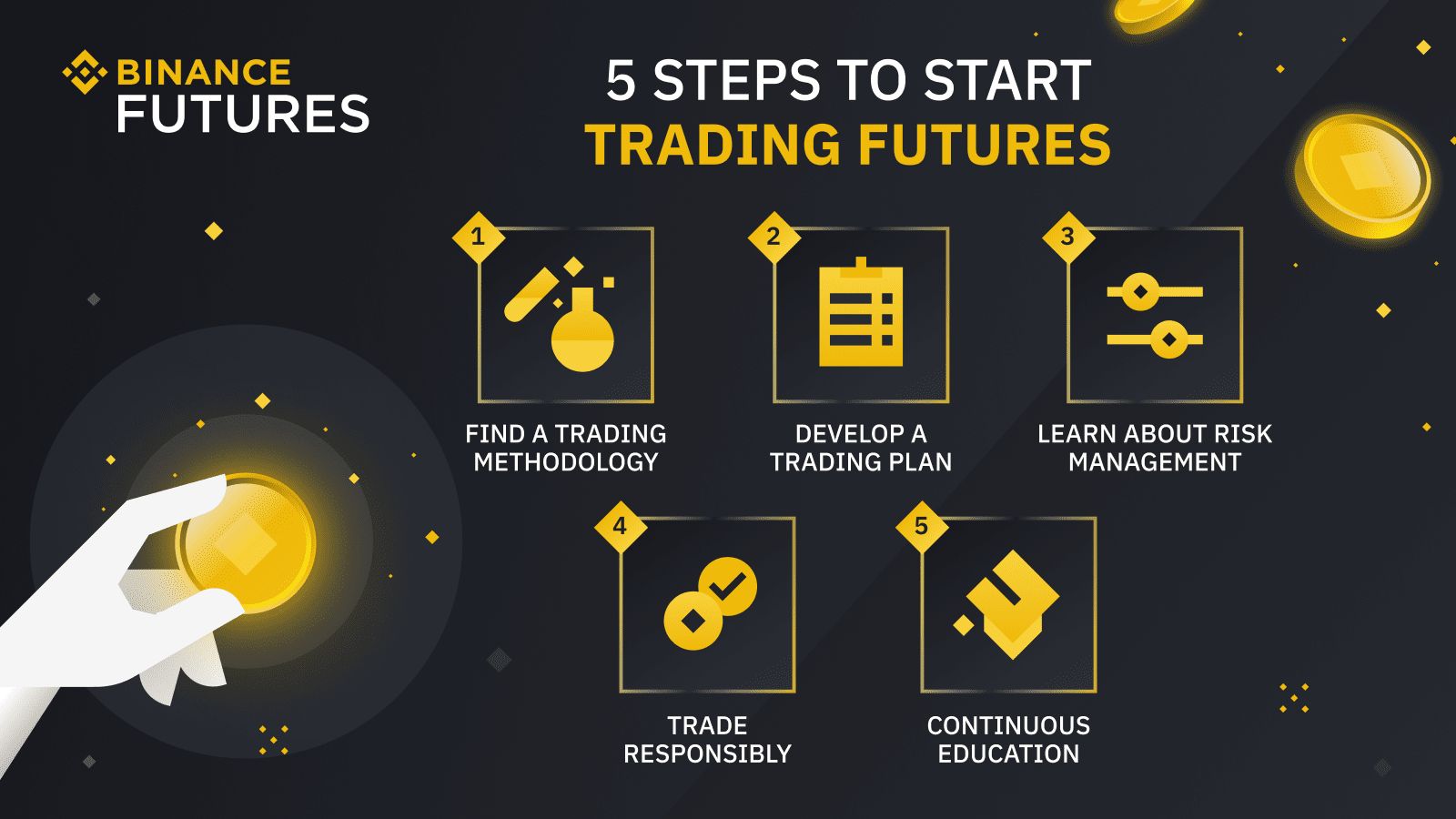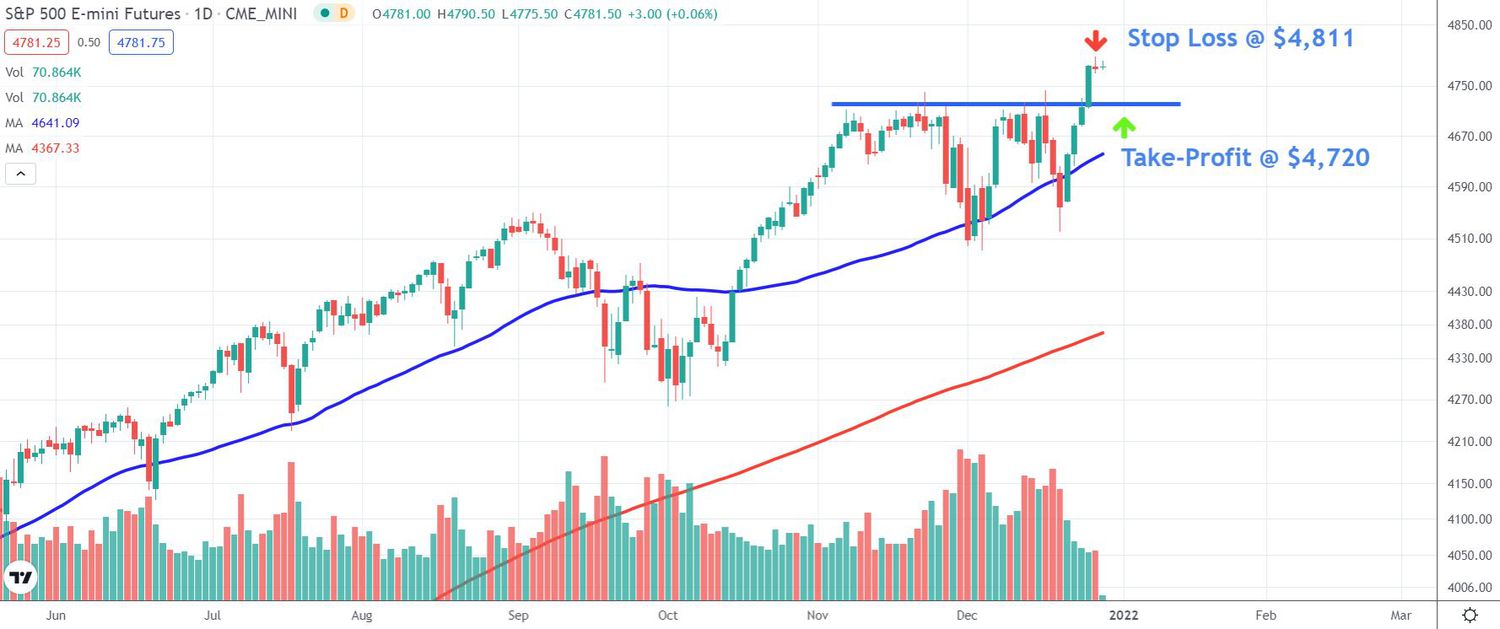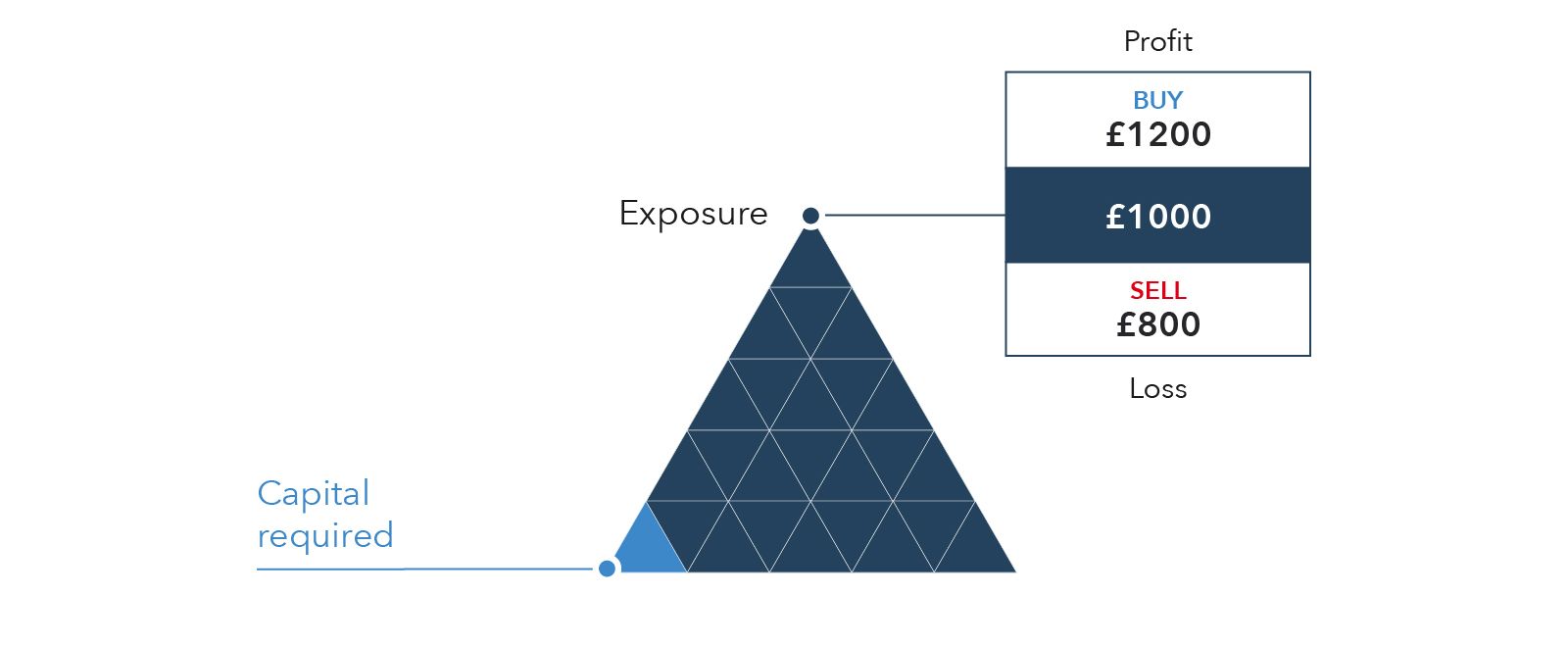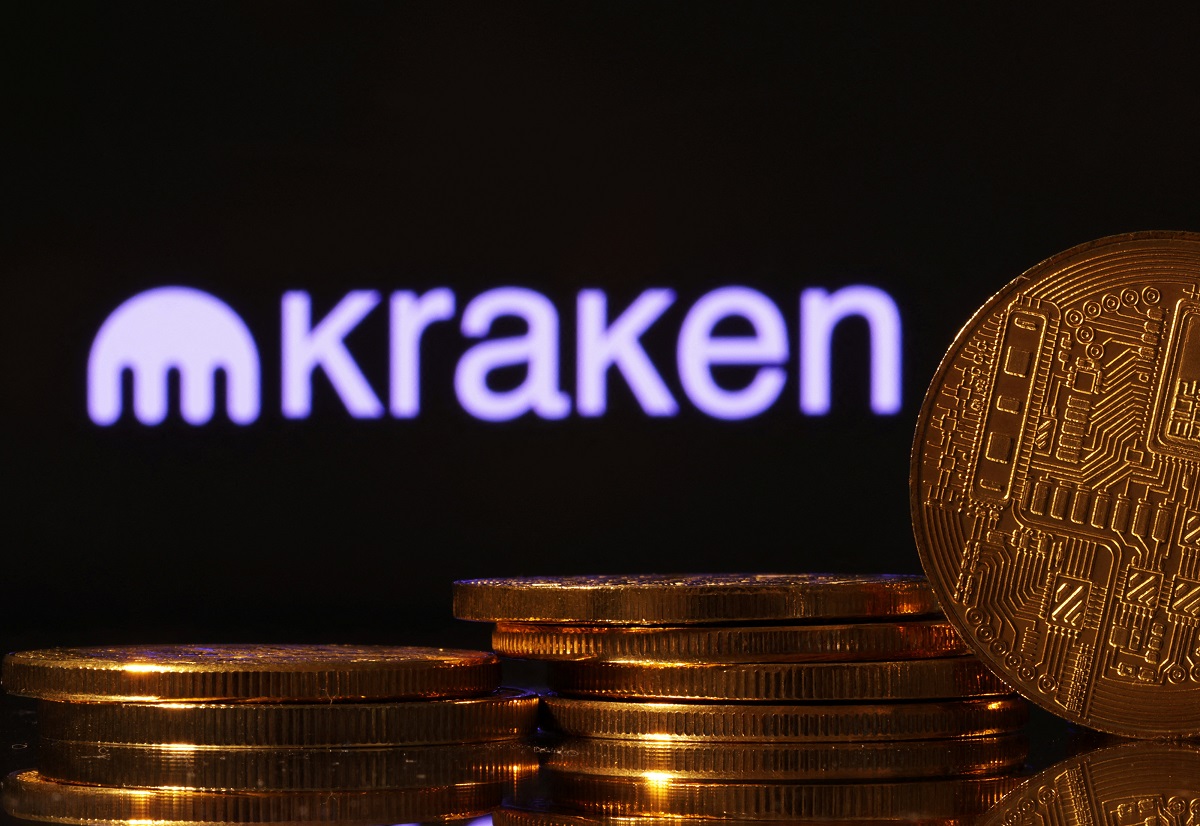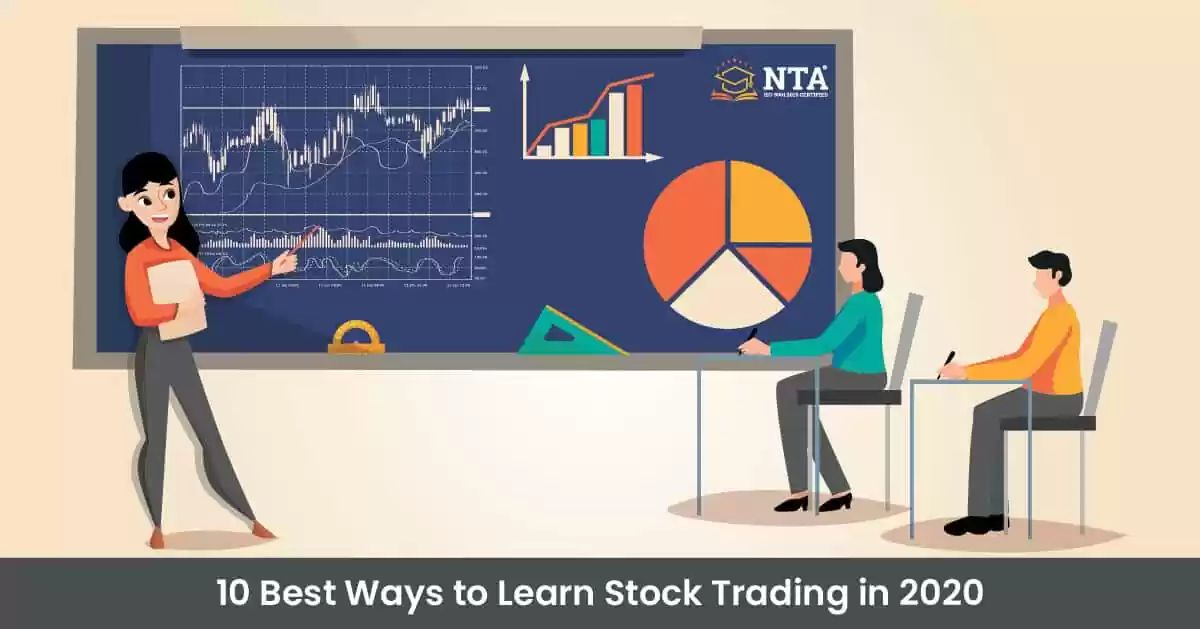What are Futures?
Futures are financial contracts that represent an agreement to buy or sell a specific asset at a predetermined price and date in the future. These contracts are traded on exchanges, allowing individuals and institutions to speculate on the price movement of various assets, including commodities, stock indices, currencies, and interest rates.
At their core, futures contracts are derivative instruments, meaning their value is derived from the underlying asset. This allows traders to participate in the price movements of assets without having to own the actual asset itself, making futures a popular choice for speculators and hedgers alike.
Unlike stocks or bonds, which represent ownership or debt, futures contracts are obligations to either buy or sell an asset at a later date. The contract specifies the quantity of the asset, its quality, and the agreed-upon price, known as the futures price. The expiration date indicates when the contract will be settled, either through physical delivery of the asset or a cash settlement.
One key feature of futures contracts is leverage. Traders are only required to deposit a fraction of the contract’s total value, known as the margin. This enables traders to amplify potential returns but also exposes them to higher levels of risk. It’s important to understand and manage this risk before engaging in futures trading.
Futures trading offers several advantages. It provides liquidity, with high trading volumes and tight bid-ask spreads, ensuring efficient price discovery. It also allows for both long and short positions, meaning traders can profit from both rising and falling markets. Additionally, futures can be used as a hedging tool to protect against price fluctuations and manage risk in other investments.
Futures contracts are standardized, with predetermined contract sizes and expiration dates. This standardization simplifies the trading process and facilitates price transparency. It also enables traders to easily roll over or close out their positions before the expiration date.
Overall, futures trading offers opportunities for profit and risk management in various financial markets. However, it’s important to thoroughly understand the mechanics of futures contracts and develop a sound trading strategy before getting started.
Why Trade Futures?
Trading futures can offer a range of benefits for individuals and institutions looking to diversify their investment portfolios and capitalize on market opportunities. Here are some compelling reasons to consider trading futures:
1. Leverage: Futures contracts allow traders to control a larger position with a relatively small initial investment. This leverage magnifies potential returns, making futures an attractive option for those seeking higher profit potential.
2. Diversification: Futures trading provides exposure to a wide range of markets, including commodities, currencies, stock indices, and interest rates. This diversification can help spread risk and reduce the impact of volatility in any single asset class.
3. Hedging: Futures contracts can be used as a risk management tool by hedging against adverse price movements. For example, a farmer can use agricultural futures contracts to protect against potential losses caused by unfavorable weather conditions or fluctuations in commodity prices.
4. Liquidity: Futures markets are highly liquid, with a large number of participants actively buying and selling contracts. This liquidity ensures that traders can easily enter and exit positions at fair market prices, minimizing the impact of slippage.
5. 24/7 Trading: Unlike many other financial markets, futures trading operates around the clock. This allows traders to react quickly to breaking news, economic events, and global market developments, providing ample trading opportunities.
6. Short-Selling Opportunities: Futures contracts enable traders to profit from falling markets through short-selling. By selling a futures contract they don’t own, traders can take advantage of declining prices and potentially make profits in bearish market conditions.
7. Price Transparency: Futures exchanges provide real-time pricing information, allowing traders to access accurate market data and make informed decisions. This transparency ensures fair pricing and reduces the risk of market manipulation.
8. Tax Advantages: In many jurisdictions, futures trading benefits from favorable tax treatment. Consult with a tax professional to understand the specific tax advantages available in your location.
It’s important to note that trading futures involves risks, including the potential for losses exceeding the initial investment. Therefore, it is crucial to conduct thorough research, develop a comprehensive trading plan, and seek professional guidance to maximize the potential benefits while managing the associated risks.
Choosing a Broker
When it comes to trading futures, selecting the right broker is crucial for your success. A reliable and reputable broker can provide the necessary tools, platforms, and support to execute trades efficiently and navigate the complexities of the futures market. Here are some key factors to consider when choosing a broker:
1. Regulation: Ensure that the broker you choose is regulated by a reputable financial authority. Regulation helps protect traders’ interests, ensures fair trading practices, and provides recourse in case of disputes.
2. Commission and Fees: Compare the commission rates and fees charged by different brokers. While it’s important to be mindful of costs, be sure to consider the overall value provided by the broker, including the quality of execution, reliability of platforms, and customer support.
3. Trading Platforms: Evaluate the broker’s trading platforms. Look for platforms that are user-friendly, offer advanced charting tools, real-time market data, and order execution capabilities. A reliable platform with a stable connection is essential for timely trade execution.
4. Product Range: Consider the range of futures contracts offered by the broker. Ensure that they provide access to the markets and assets you are interested in trading. A comprehensive offering allows you to diversify your trading strategies and take advantage of various opportunities.
5. Customer Support: Assess the quality and responsiveness of the broker’s customer support. Prompt and reliable support is crucial, especially during volatile market conditions or when you encounter technical difficulties.
6. Educational Resources: Look for brokers that offer educational resources such as webinars, tutorials, market analysis, and research reports. These resources can help improve your understanding of futures trading and enhance your trading strategies.
7. Margin Requirements: Check the broker’s margin requirements, as they can significantly impact your trading capital and risk management. Moreover, ensure that the broker offers competitive margin rates and clear margin policies.
8. Security and Account Protection: Verify the broker’s security measures to protect your personal and financial information. Look for brokers that utilize encryption technology and offer account protection measures.
9. Reputation and Track Record: Research the broker’s reputation by reading reviews, checking their track record, and verifying their experience in the market. Choose a broker with a solid reputation and a history of providing reliable and trustworthy services.
10. Demo Account: Consider opening a demo account with the broker to test their platform, practice trading strategies, and familiarize yourself with their services before committing real funds.
Remember, choosing the right broker is a personal decision based on your specific trading needs and preferences. Take the time to thoroughly research and compare different brokers to find the one that best aligns with your goals and trading style.
Understanding Margin
Margin is an essential concept in futures trading that refers to the initial deposit required to open and maintain a position. It allows traders to control a larger contract value with a fraction of the total value, amplifying the potential returns and exposure to market movements. Understanding margin is crucial for effectively managing risk in futures trading. Here’s what you need to know:
1. Initial Margin: When opening a futures position, traders are required to deposit an initial margin with their broker. This margin represents a percentage of the total contract value and serves as a form of collateral to cover potential losses. The initial margin requirement varies depending on the asset being traded and the exchange’s regulations.
2. Maintenance Margin: In addition to the initial margin, traders must also maintain a maintenance margin in their trading account. The maintenance margin is lower than the initial margin but must be maintained to ensure the position remains open. If the account’s equity falls below the maintenance margin requirement, the trader may receive a margin call from the broker, requiring additional funds to be deposited. Failure to meet a margin call may lead to the position being liquidated by the broker.
3. Leverage and Margin Ratio: Margin allows traders to leverage their trading capital, meaning they can control a larger position size with a smaller amount of funds. The margin ratio indicates the amount of leverage provided by the broker. For example, a margin ratio of 5% means that a trader only needs to deposit 5% of the total contract value as margin.
4. Mark-to-Market: Futures positions are marked-to-market regularly, typically on a daily basis. This process involves adjusting the margin account based on the current market price of the contract. Profits and losses are realized and added or deducted from the trader’s account accordingly. Mark-to-market helps ensure the availability of sufficient funds to cover potential losses in real-time.
5. Margin Requirements: Different futures contracts have varying margin requirements based on factors such as volatility and liquidity. Market conditions and regulations also influence margin requirements. It’s important to understand the specific margin requirements of the contracts you intend to trade to determine the necessary initial and maintenance margin levels.
6. Margin Call: If the value of a trader’s position falls below a certain threshold, the broker may issue a margin call. This is a request for additional margin to be deposited into the account to maintain the position. Traders should monitor their positions closely to avoid margin calls and have a plan in place to manage their margin requirements effectively.
7. Risk Management: Understanding margin is essential for managing risk in futures trading. Traders should establish risk management strategies, including setting stop-loss orders and position sizing to control potential losses and ensure sufficient margin remains in the account to weather market fluctuations.
It’s important to remember that while margin can amplify potential profits, it also increases the risk of losses. Proper risk management practices, including thorough research, disciplined trading strategies, and monitoring of margin requirements, are essential for successful futures trading.
Types of Futures Contracts
Futures contracts come in a variety of types, catering to different asset classes and trading needs. Understanding the various types of futures contracts available can help traders diversify their portfolios and capitalize on specific market opportunities. Here are some common types of futures contracts:
1. Commodity Futures: Commodity futures involve the trading of contracts representing physical goods such as agricultural products (wheat, corn, coffee), energy resources (crude oil, natural gas), metals (gold, silver, copper), and livestock (cattle, hogs). These contracts allow traders to speculate on the price movements of these underlying commodities.
2. Stock Index Futures: Stock index futures are contracts that track the performance of a specific stock market index, such as the S&P 500 or the Dow Jones Industrial Average. Traders can speculate on the future direction of the stock market without having to trade individual stocks. Stock index futures are popular among investors looking for broad market exposure.
3. Currency Futures: Currency futures allow traders to speculate on the exchange rate between two currencies. These contracts are used to hedge against currency fluctuations or profit from anticipated moves in foreign exchange rates. Popular currency futures include contracts for major currency pairs like EUR/USD, GBP/USD, or USD/JPY.
4. Interest Rate Futures: Interest rate futures involve contracts that track the future value of interest rates, such as those tied to government bonds, notes, or bills. These futures allow traders to take positions based on expectations of interest rate changes, which can impact bond prices and overall market sentiment.
5. Equity Futures: Equity futures are contracts based on the future price of individual stocks. Traders can speculate on the price movement of specific stocks, hedge existing stock positions, or create trading strategies based on a company’s prospects. Equity futures provide opportunities to trade well-known stocks without directly owning the underlying shares.
6. Agricultural Futures: Agricultural futures contracts are specific to agricultural commodities, including grains, livestock, and soft commodities. These contracts enable traders to speculate on and manage risks associated with factors such as weather conditions, supply and demand dynamics, and changes in government policies affecting the agricultural industry.
7. Foreign Exchange (Forex) Futures: Forex futures contracts involve the exchange of currencies at a predetermined price and future date. These contracts are similar to currency futures but are typically traded on regulated exchange platforms. Forex futures offer traders a standardized and transparent way to participate in the forex market.
8. Metal Futures: Metal futures involve contracts related to various metals, including precious metals like gold, silver, and platinum, as well as base metals like copper, aluminum, and zinc. These contracts enable traders to take positions based on supply and demand factors, global economic conditions, and geopolitical events impacting metal prices.
Each type of futures contract has its own unique characteristics and considerations. Traders should thoroughly research and understand the specific dynamics and drivers of the asset class they are interested in trading to make informed trading decisions and develop effective strategies.
Basic Strategies for Trading Futures
Trading futures requires a well-defined strategy to navigate the inherent complexities and volatility of the market. While there are countless strategies available, here are some basic strategies commonly used by futures traders:
1. Trend Following: Trend following is a popular strategy that involves identifying and trading in the direction of established market trends. Traders can use technical analysis tools such as moving averages, trendlines, and momentum indicators to identify and capture trends in the price of futures contracts.
2. Breakout Trading: Breakout trading involves entering a position when the price of a futures contract breaks above or below a significant level of support or resistance. Traders may set predetermined entry and exit levels to capture potential price movements resulting from breakouts.
3. Range Trading: Range trading is a strategy used when the price of a futures contract is trading within a defined range between support and resistance levels. Traders aim to buy near support levels and sell near resistance levels, profiting from price reversals within the established range.
4. Spread Trading: Spread trading involves taking offsetting positions in two different futures contracts that are related to each other. This strategy aims to profit from the price difference between the two contracts. Spread trading can be used to mitigate risk and take advantage of relative price movements.
5. Arbitrage: Arbitrage is a strategy that takes advantage of pricing discrepancies between related futures contracts or different trading venues. Traders aim to buy low and sell high in order to profit from the price discrepancy, with minimal risk. This strategy requires fast execution and access to real-time market data.
6. Scalping: Scalping is a short-term trading strategy that aims to capture small price fluctuations for quick profits. Traders may enter and exit positions within seconds or minutes, relying on technical indicators and fast execution to take advantage of short-lived price movements.
7. Breakout Pullback: The breakout pullback strategy combines elements of breakout trading and trend following. Traders identify a breakout from a consolidation pattern and then wait for a pullback to the breakout level, entering a position in the direction of the original breakout.
8. News Trading: News trading involves taking positions based on anticipated market reactions to economic data releases, company earnings announcements, or geopolitical events. Traders closely monitor news events and attempt to capitalize on the resulting market volatility.
It’s worth noting that while these strategies provide a starting point, successful trading requires adaptability and a deep understanding of market dynamics. Traders should develop their strategies based on their risk tolerance, trading style, and market conditions. Additionally, risk management techniques, such as setting stop-loss orders and managing position sizes, are crucial for protecting capital and managing potential losses.
Technical Analysis for Futures Trading
Technical analysis is a widely used approach in futures trading that involves studying historical price and volume data to forecast future price movements. Traders who rely on technical analysis analyze charts and indicators to identify patterns, trends, and potential trading opportunities. Here are some key concepts and tools used in technical analysis for futures trading:
1. Candlestick Charts: Candlestick charts present price data in a visually appealing format. Each candlestick represents a specific time period and provides information on the opening, closing, highest, and lowest prices within that period. Traders use candlestick patterns to identify potential reversal or continuation signals.
2. Trendlines: Trendlines are straight lines drawn on a chart to connect a series of higher lows in an uptrend or lower highs in a downtrend. They help traders identify the direction and strength of a trend. Breaks of trendlines can indicate potential trend reversals.
3. Moving Averages: Moving averages are calculated by taking the average price over a specific time period. They help smooth out price fluctuations and identify trends. Traders often use moving averages to determine support and resistance levels and to generate trading signals when the price crosses above or below the moving average.
4. Oscillators: Oscillators, such as the Relative Strength Index (RSI) and Stochastic Oscillator, help identify overbought or oversold conditions in the market. These indicators measure the speed and momentum of price movements and can generate signals for potential trend reversals.
5. Volume Analysis: Volume is an important component in technical analysis. Increased volume during price advances or declines can indicate the strength or weakness of a trend. Volume analysis helps traders confirm price movements and detect potential market manipulation.
6. Support and Resistance: Support levels are price levels where buying pressure is anticipated to outweigh selling pressure, causing the price to pause or reverse. Resistance levels, on the other hand, are price levels where selling pressure is anticipated to outweigh buying pressure. Identifying support and resistance levels is key to determining potential entry and exit points.
7. Chart Patterns: Chart patterns, such as triangles, head and shoulders, double tops, and double bottoms, provide visual representations of historic price movements. Traders analyze these patterns to predict potential trend continuations or reversals.
8. Fibonacci Retracement: Fibonacci retracement is a tool based on the Fibonacci sequence that helps traders identify potential support and resistance levels based on historical price swings. Traders use Fibonacci retracement levels to determine potential entry and exit points.
It’s important to note that technical analysis is not foolproof and should be used in conjunction with other analysis tools and risk management strategies. Traders should combine technical analysis with fundamental analysis and stay updated on market news and events that can influence futures prices.
Fundamental Analysis for Futures Trading
Fundamental analysis is a method used in futures trading to evaluate the intrinsic value of an asset by examining the underlying economic, financial, and qualitative factors that can impact its price. This approach involves analyzing market supply and demand dynamics, macroeconomic indicators, company financials, geopolitical events, and other relevant factors that can influence future price movements. Here are some key concepts and tools used in fundamental analysis for futures trading:
1. Supply and Demand Factors: Understanding supply and demand dynamics is crucial in determining the future price direction of a futures contract. Factors such as changes in production levels, inventories, and consumption patterns of the underlying asset can impact supply and demand, thus influencing prices.
2. Economic Indicators: Economic indicators, such as GDP growth, inflation rates, employment data, and interest rates, can significantly impact futures prices. Traders monitor these macroeconomic indicators to gauge the overall health of the economy and anticipate potential market trends.
3. Company Financials: For futures contracts based on individual stocks or commodities, analyzing company financial statements can provide insights into the financial health, profitability, and growth prospects of the underlying company. Earnings reports, revenue forecasts, and balance sheets are essential factors to consider for fundamental analysis.
4. Geopolitical Factors: Geopolitical events and developments, such as political instability, wars, trade policies, and natural disasters, can have a profound impact on futures prices. Traders need to stay informed about global events and their potential influence on the markets they trade.
5. Seasonal Patterns: Some futures contracts exhibit seasonal fluctuations due to factors such as weather conditions, agricultural cycles, or consumer demand patterns. Identifying and analyzing seasonal patterns can provide valuable insights for trading strategies.
6. Market Sentiment and News: Traders should stay updated on market sentiment and news that can impact futures prices. News about supply disruptions, new technologies, regulatory changes, or geopolitical developments can significantly affect market dynamics.
7. Government Policies and Regulations: Government policies, regulations, and subsidies can heavily influence certain futures markets. Traders need to be aware of policy changes and their potential impact on the markets they trade, especially in sectors such as energy, agriculture, or financial markets.
8. Comparative Analysis: Comparative analysis involves comparing the performance and valuation of different futures contracts within the same asset class. This analysis can help identify relative strengths or weaknesses and uncover potential trading opportunities.
Fundamental analysis provides a broader perspective on the factors driving futures prices. It is crucial to combine fundamental analysis with other forms of analysis, such as technical analysis and risk management strategies, to make informed trading decisions. Traders should continuously monitor and evaluate fundamental factors as they can change over time and significantly affect market dynamics.
Risk Management
Risk management is a vital component of successful futures trading. It involves implementing strategies and techniques to identify, assess, and mitigate potential risks to protect trading capital and minimize losses. Here are some key considerations and practices for effective risk management in futures trading:
1. Setting Risk Tolerance: Determine your risk tolerance level before entering into trades. Understand how much risk you are willing to take on each trade and establish guidelines for maximum acceptable losses.
2. Position Sizing: Proper position sizing is crucial in risk management. Determine the appropriate size of each trade based on your risk tolerance, account size, and the specific characteristics of the futures contract being traded. Avoid overexposing your account to a single trade.
3. Stop-Loss Orders: Implement stop-loss orders to automatically exit a trade if the price moves against your position beyond a predetermined threshold. This helps limit potential losses and protects against excessive drawdowns.
4. Diversification: Diversify your portfolio by trading different futures contracts across various asset classes. This helps spread risk and avoid overexposure to a single market or position. Consider diversifying across different industries, sectors, and even geographic regions.
5. Managing Leverage: Understand the risks associated with leverage and use it judiciously. While leverage can amplify potential profits, it also increases potential losses. Consider the appropriate level of leverage based on your risk tolerance and trading strategy.
6. Regular Monitoring: Stay actively involved in managing your trades by monitoring market conditions, price movements, and news that may impact your positions. Regularly assess and reassess your trades to determine if adjustments or exits are necessary to manage risks effectively.
7. Risk-Reward Ratio: Maintain a positive risk-reward ratio for each trade. Aim for potential profit targets that exceed potential losses. This ensures that even if not all trades are profitable, the overall risk-reward ratio favors profitability over a series of trades.
8. Backtesting and Simulation: Test your trading strategies using historical data or simulated trading environments. This allows you to measure the performance of your strategies, identify potential weaknesses, and adjust them accordingly before deploying real capital.
9. Constant Learning and Adaptation: The markets are ever-changing, and new risks may arise. Continuously educate yourself about market trends, new trading techniques, and risk management practices. Stay adaptable and be willing to adjust your strategies as needed.
10. Emotion Control: Emotional decision-making can lead to impulsive and irrational trading decisions. Keep a disciplined mindset and stick to your predetermined risk management guidelines, even during periods of market volatility or unexpected events.
By implementing sound risk management principles, traders can minimize potential losses, protect their trading capital, and increase their chances of long-term success in futures trading.
Trading Psychology
Trading psychology plays a crucial role in the success of futures traders. Maintaining a disciplined mindset, managing emotions, and developing a positive mental attitude are essential for making rational decisions and navigating the ups and downs of the market. Here are some key aspects of trading psychology to consider:
1. Emotion Management: Emotions such as fear, greed, and impatience can cloud judgment and lead to irrational trading decisions. Traders need to develop emotional resilience, maintain discipline, and stick to their trading plans, regardless of market conditions or external influences.
2. Patience and Discipline: Successful traders exhibit patience and discipline in waiting for high-probability trades that align with their strategies. They avoid impulsive trades driven by FOMO (fear of missing out) and have the discipline to stick to their predefined entry and exit points.
3. Risk Acceptance: Trading involves inherent risk, and traders must be willing to accept and manage that risk. Understanding and accepting the possibility of losses is crucial for long-term success. Fear of losing should not deter traders from taking calculated risks based on their analysis and strategy.
4. Adaptability: Markets are dynamic, and traders need to adapt their strategies as market conditions change. Being open-minded, flexible, and willing to adjust strategies based on new information is necessary to thrive in evolving market environments.
5. Confidence and Self-Belief: Having belief in one’s abilities and confidence in the trading strategy is important. Positive self-talk and maintaining a growth mindset can help overcome self-doubt and maintain focus during challenging times.
6. Continuous Learning: The market is a constant learning experience, and successful traders understand the importance of continuous education. They seek out new knowledge, study market trends, and adapt their strategies based on new information and insights.
7. Managing Expectations: Realistic expectations are crucial for managing emotions and avoiding disappointment. Understanding that trading has ups and downs and that consistent profitability takes time can help traders remain focused and committed to their long-term goals.
8. Journaling and Reflection: Maintaining a trading journal to track trades, record thoughts, and reflect on performance can be highly beneficial. It provides an opportunity to analyze past trades, identify patterns, and learn from mistakes, helping traders improve their decision-making processes.
9. Mental and Physical Well-being: Taking care of mental and physical well-being is essential for trading success. Adequate rest, healthy habits, and stress management techniques contribute to maintaining focus, resilience, and overall mental clarity.
10. Support and Accountability: Surrounding yourself with a supportive network of fellow traders or mentors can provide guidance, accountability, and a sounding board for ideas and challenges. Sharing experiences and learning from others can foster growth and enhance trading psychology.
Trading psychology is often overlooked but is an integral part of achieving success in futures trading. By cultivating a strong mental mindset, managing emotions, and continuously improving their trading psychology, traders can position themselves for consistent profitability and long-term growth.
Getting Started with Futures Trading
Embarking on a futures trading journey can be exciting and potentially rewarding. However, it’s important to approach it with careful preparation and knowledge. Here are some steps to help you get started:
1. Education and Research: Begin by educating yourself on the basics of futures trading. Familiarize yourself with the terminology, market dynamics, and trading strategies. Read books, attend webinars, and utilize online educational resources to enhance your understanding.
2. Define Your Trading Goals: Determine your trading goals and objectives. Are you looking to generate short-term profits or build long-term wealth? Clarifying your goals will help shape your trading strategy and guide your decision-making process.
3. Choose a Reliable Broker: Selecting a reputable and reliable broker is crucial. Look for a broker that aligns with your trading goals, offers competitive commission rates, provides a user-friendly trading platform, and delivers quality customer service and support.
4. Develop a Trading Plan: Put together a comprehensive trading plan that outlines your strategies, risk tolerance, position sizing, and risk management techniques. Having a well-defined plan will help you stay disciplined and focused while navigating the markets.
5. Practice with a Demo Account: Most brokers offer demo accounts that allow you to practice trading with virtual funds. Use this opportunity to familiarize yourself with the trading platform, test your strategies, and gain confidence before trading with real money.
6. Start with Small Positions: When transitioning to live trading, start with small position sizes to manage risk and gain experience. Focus on consistency and gradually increase your position sizes as you become more comfortable and confident in your trading abilities.
7. Monitor Market Conditions: Stay informed about the financial markets and any news and events that may impact the futures contracts you are trading. Utilize real-time market data and news feeds to make informed decisions and adapt your strategies accordingly.
8. Keep a Trading Journal: Maintain a trading journal to record your trades, thoughts, and observations. Reviewing your journal can provide valuable insights into your trading performance, identify patterns, and help refine your strategies.
9. Continuous Learning: The world of futures trading is constantly evolving. Stay committed to continuous learning by reading market analysis, staying updated on industry trends, attending webinars, and joining communities where you can exchange ideas with fellow traders.
10. Manage Your Emotions: Emotions can significantly impact trading decisions. Practice emotional control and discipline, and avoid making impulsive trades driven by fear or greed. Implement risk management techniques and stick to your trading plan.
Remember, futures trading involves risks, and losses are possible. It’s important to manage your risk, start with proper capital, and gradually increase your position sizes as you gain experience and confidence. With proper education, careful planning, and a disciplined approach, you can embark on a successful journey in futures trading.







